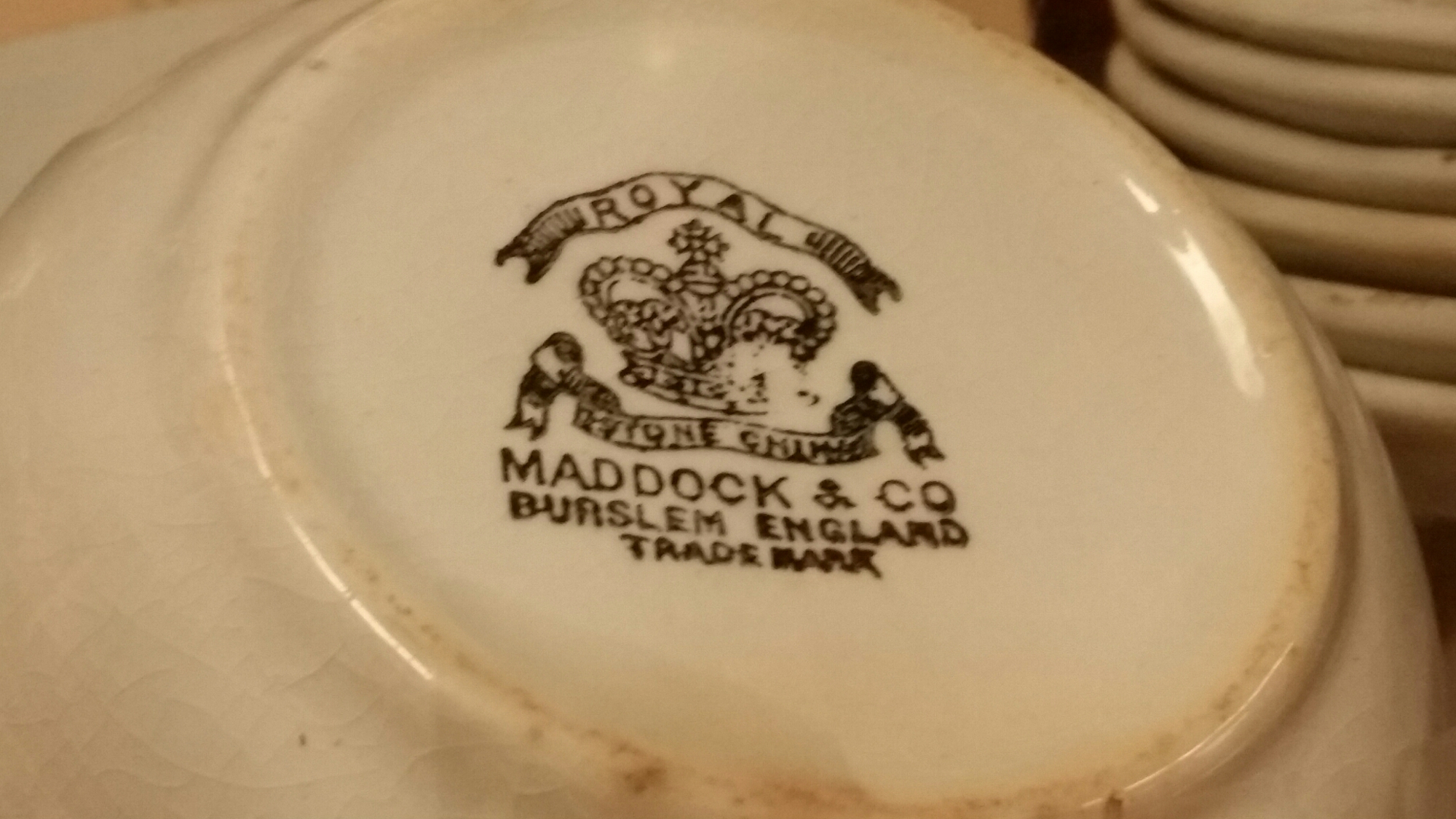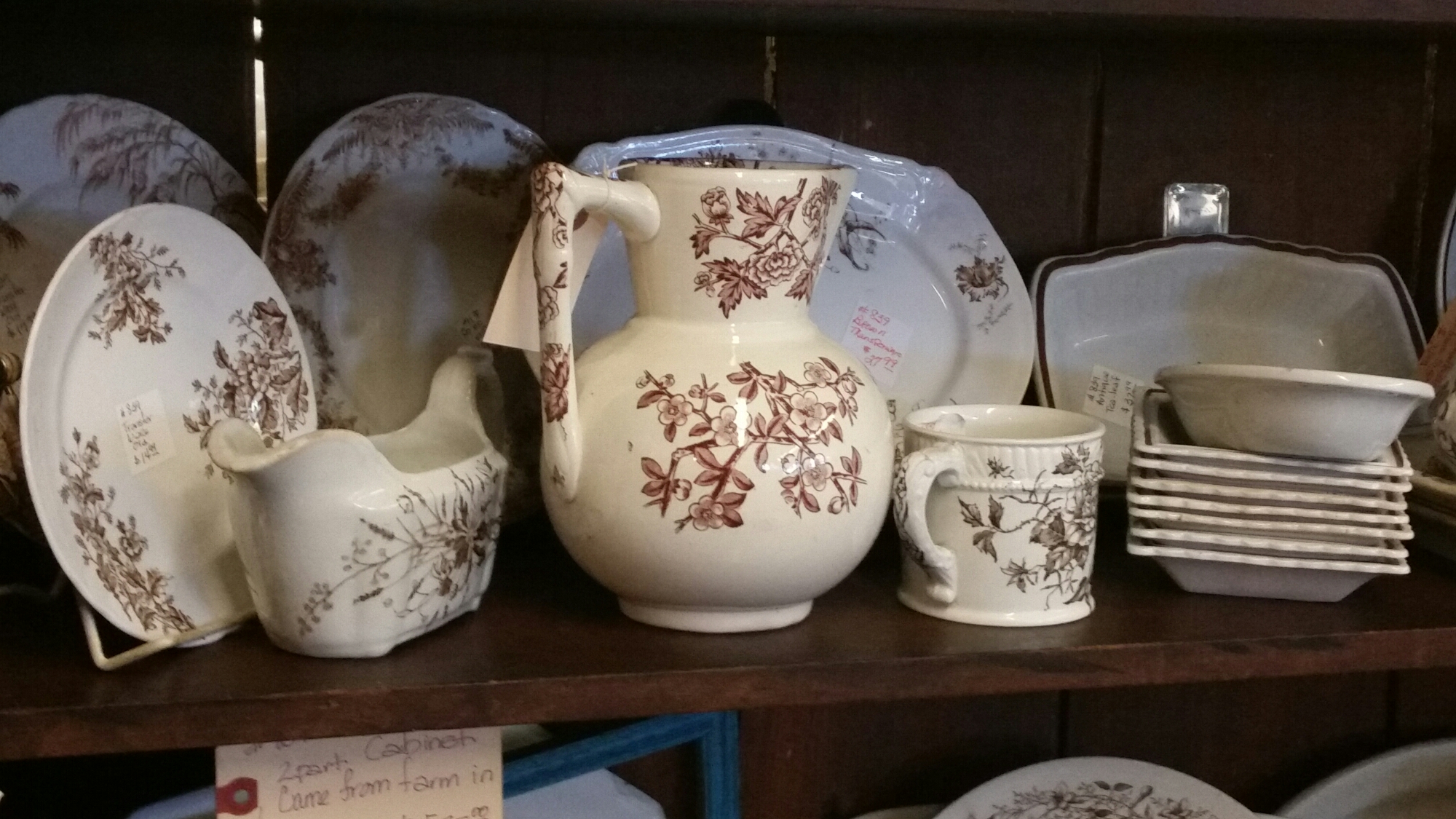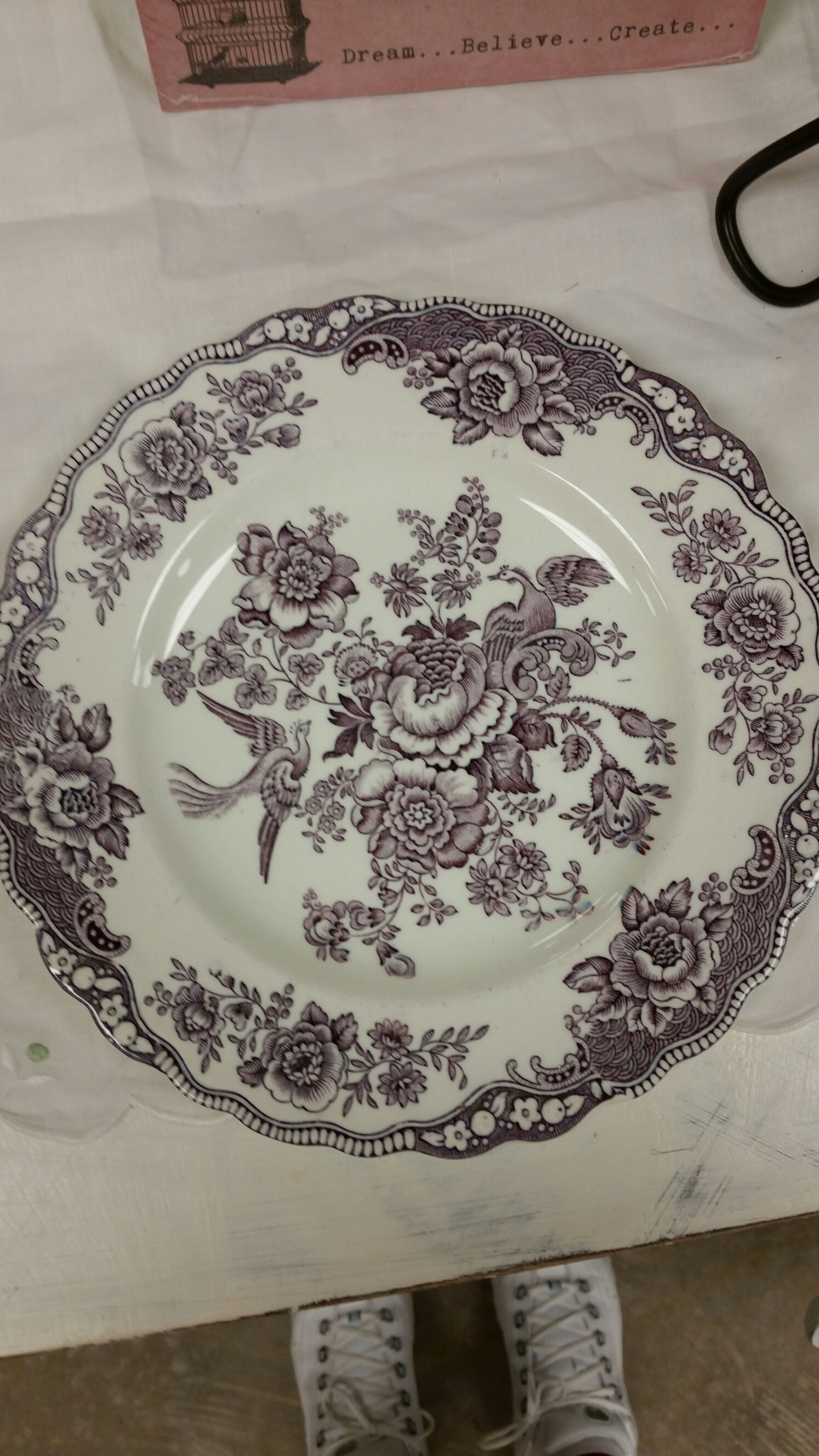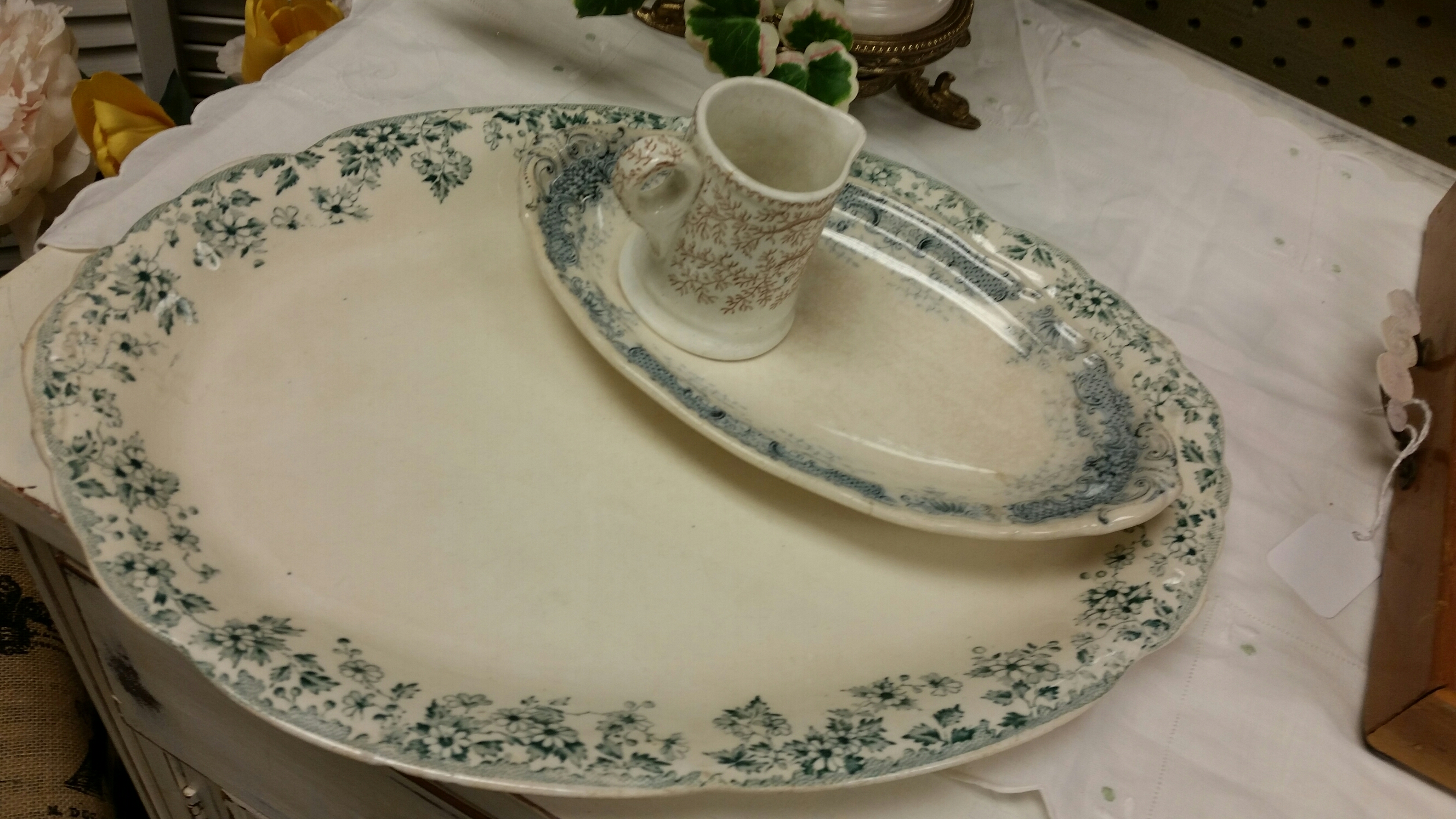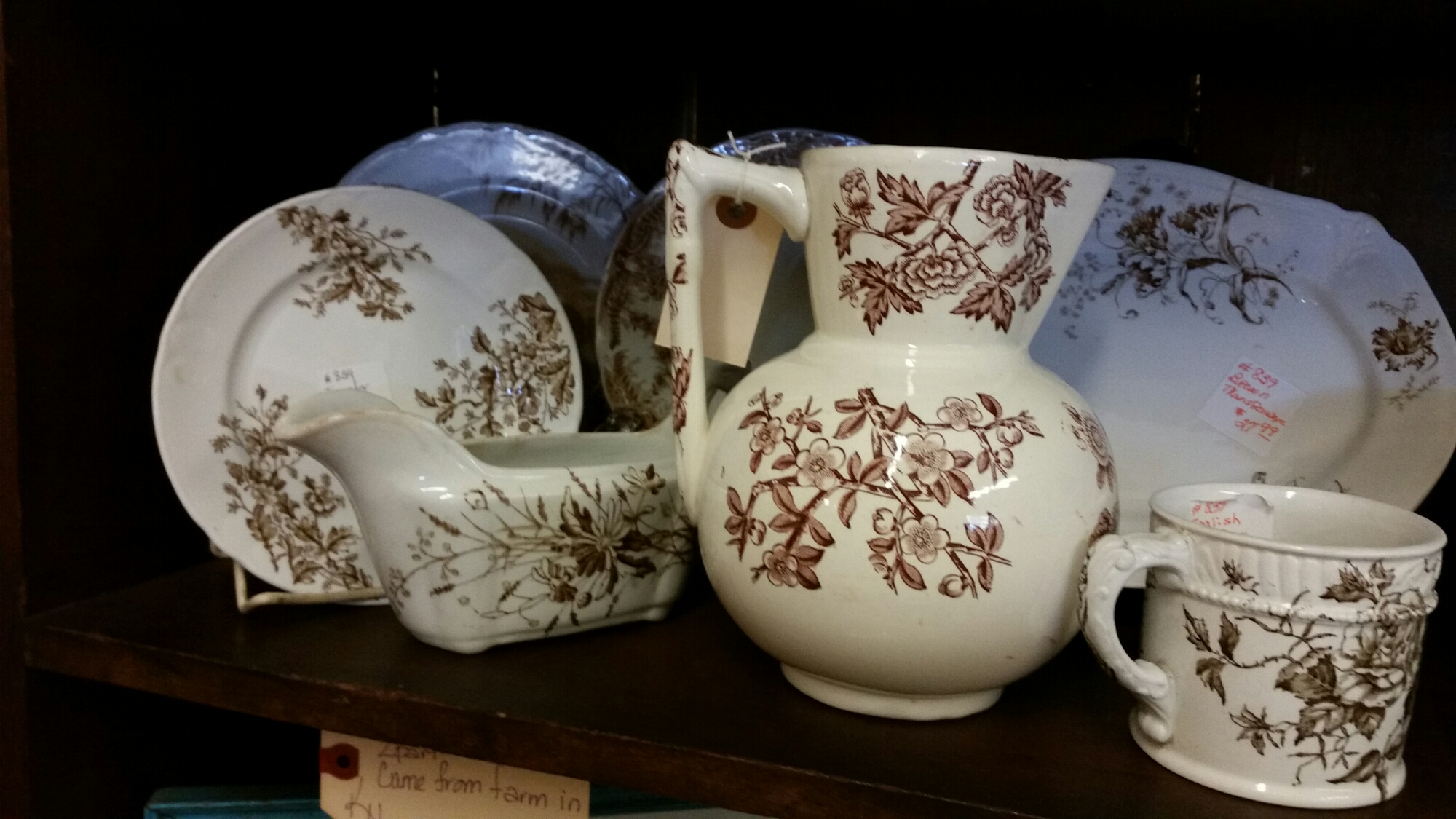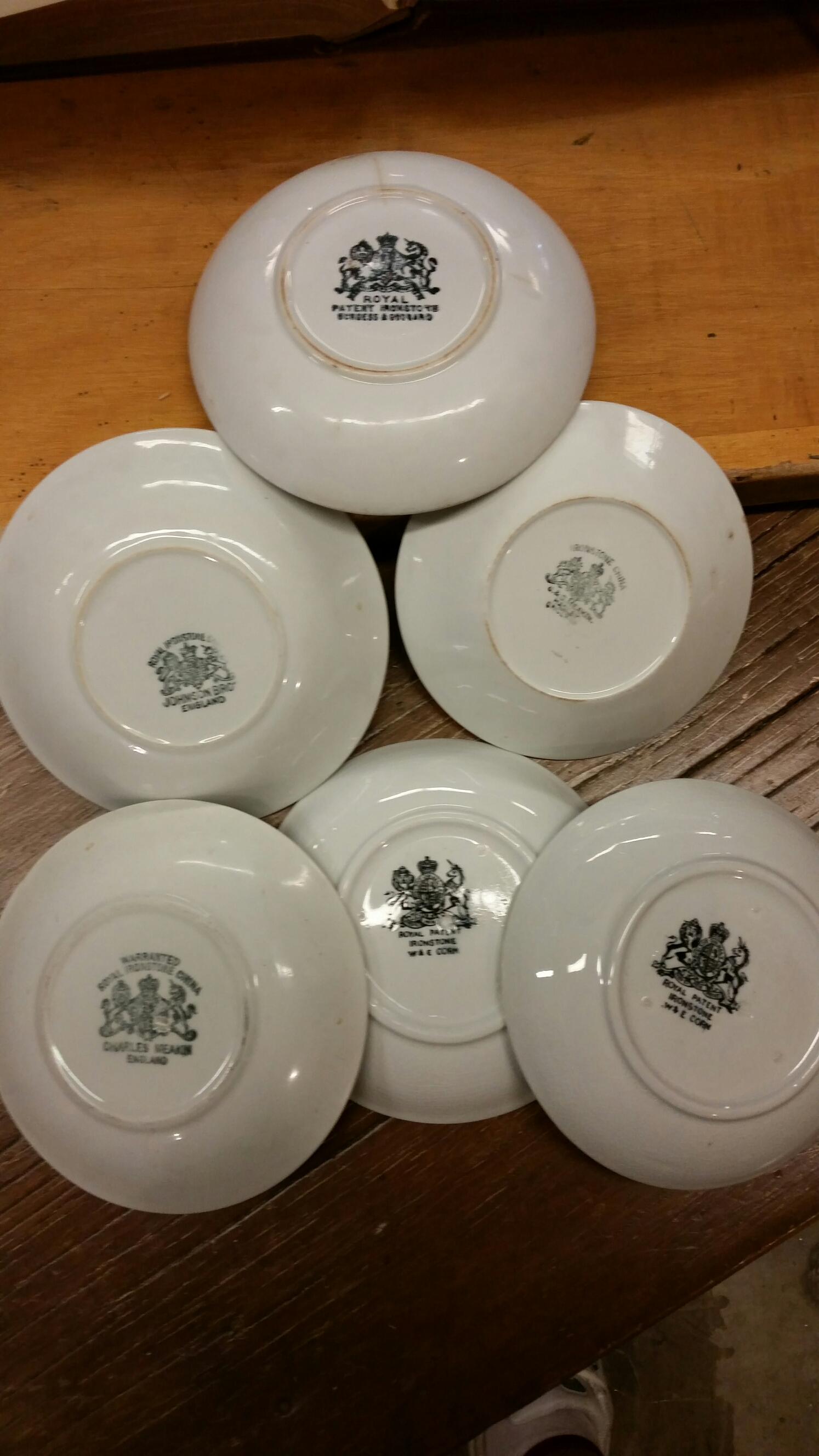English Ironstone and Transferware
A great collection English transferware in brown and blue. Highly collectible Kama getting harder and harder to find. A wide variety of butter pat’s in Ironstone and also in transferware.Ironstone china is not porcelain; it is a porous, glaze-covered earthenware, consisting of clay mixed with iron slag and feldspar, and a small amount of cobalt. First patented in 1813 by Charles James Mason in Staffordshire, England, it was decorated with under-glaze transfer patterns. Eventually, by the 1840’s, undecorated, or white ironstone china, was being manufactured for export to the Americas. This is the white ironstone china collected today. Older white ironstone has an almost bluish cast to it, due to the cobalt, while later examples have a creamy color.Transferware is pottery. It can be earthenware or porcelain, ironstone or bone china. It’s most distinctive feature is a pattern that has been applied by transferring an etching onto the pottery. This is done by inking an etching which has been engraved on a copper plate, applying a specially sized paper to the copper plate, and transferring the pattern left on the inked paper onto an undecorated piece of pottery. The pottery is then dipped in water to float off the paper, glazed, and re-fired.

